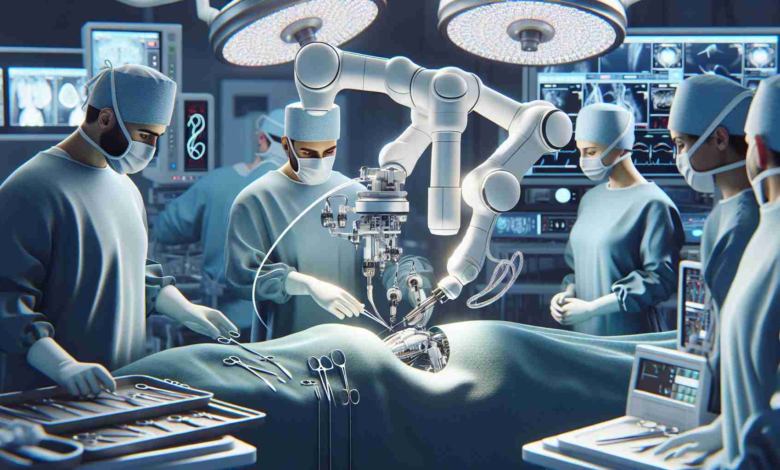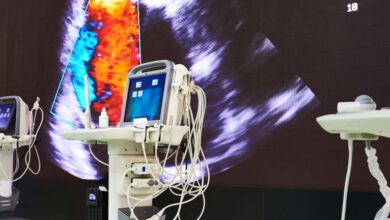The Modern Dimension of Medical Practice

The pioneering work of Dr. Jason Letran, a prominent surgeon in the Philippines, has underscored the possibilities of robotic surgery in modern medicine. Dr. Letran represents a generation of healthcare professionals who are integrating technological advancements into surgical practice, particularly with the introduction of the Da Vinci robotic system—the first of its kind for prostate cancer surgery in the nation.
Summary: Robotic Surgery – A Leap Forward in Medical Innovation
Robotic surgery has become an epitome of innovation within healthcare, as practitioners like Dr. Letran adopt sophisticated systems that allow for more precision, less invasive maneuvers, and improved patient recovery times. The Filipino surgeon’s progression from being captivated by robot shows as a child to executing complex robotic-assisted operations reflects a significant evolution in surgical methods.
The Da Vinci system, which Dr. Letran utilizes, functions using three components: a surgeon console, a patient cart with robotic arms, and a vision cart that gives a three-dimensional view of the surgery. It is celebrated for enhancing surgical precision and offering educational opportunities through its dual console system, recently introduced at the Chinese General Hospital.
The Philippines’ experience with robotic surgery highlights the balance between opportunity and challenge, as integrating these sophisticated systems comes at a high financial cost and requires comprehensive training for surgeons.
Surgical Robotics’ Positive Impact on the Healthcare Economy
Despite the initial investment, the long-term benefits of robotic surgery can be economically advantageous, as it potentially lowers the rate of surgical complications and shortens hospital stays, reducing overall healthcare expenses. Predictions for the industry suggest a potential uptick in market value, supported by the growing adoption of minimally invasive surgical techniques.
Forecasting the Future of Surgical Robotics
The future of surgical robotics looks to AI for even greater advances in precision and efficiency and envisions the possibility of conducting remote surgeries. These advances, however, will require overcoming current obstacles such as the cost and the creation of a high-speed, reliable internet connection to operate across distances.
Medical institutions around the globe continuously contribute to the field, preparing the next generation of surgeons and fostering medical innovations. For in-depth knowledge on surgical robotics, resources are available through medical and technical organizations with insights into ongoing trends and projections.
Dr. Letran’s journey from childhood fascination to executing state-of-the-art surgical procedures exemplifies the transformative impact of integrating technology in healthcare sectors. As this field burgeons, it is set to redefine medical treatments, yield economic benefits, and significantly improve patient care.
Robotic Surgery – A Shaping Force in Healthcare
The Advent of Robotic Surgery in the Philippines
The introduction of robotic surgery to the Philippines, spearheaded by specialists like Dr. Jason Letran, highlights a major shift in medical practices and investment in cutting-edge technology. Robotic systems, like the Da Vinci, are at the forefront of this innovation, bringing the benefits of minimally invasive procedures to the forefront of patient care. This has not only placed the Philippines on the medical technology map but also set the stage for further advancements in robotic-assisted operations.
Expanding the Market for Robotic Surgery
The global market for surgical robots is on a steep growth trajectory. With advantages such as reduced trauma to the patient, lower risk of infection, and quicker recovery times, this market is attracting significant investment and research. Healthcare analysts project continuous growth, driven by technological improvements and the rising demand for minimally invasive surgeries. This expanding market is revolutionizing the way hospitals plan their budgets and investments concerning surgical equipment and training.
Challenges and Innovations in Robotic Surgery
One of the biggest hurdles for expanding robotic surgery is cost—both in acquisition and operation of these sophisticated systems. However, as technology advances, these costs are expected to decrease. Issues such as cybersecurity, the need for specialized training, and the regulatory landscape remain pertinent.
Additionally, challenges related to remote surgery such as latency in internet connections and the need for high-fidelity haptic feedback are areas of significant research and development. Overcoming these challenges could lead to remote robotic surgeries becoming commonplace, allowing expert surgical care to reach underserved regions.
Developments in AI and machine learning are anticipated to enhance the capabilities of surgical robots, allowing them to perform more complex tasks with higher precision and potentially even autonomously under the supervision of a surgeon. This could lead to advancements in both the types of procedures that can be robotically assisted and the outcomes for patients.
The Broader Implications for Global Healthcare
As countries like the Philippines embrace robotic surgery, this propels further innovations and enhancements in medical devices worldwide. Medical education is adapting to this trend by including robotic surgery training in its curricula, preparing new surgeons for a technologically advanced medical environment.
To stay informed on the advancements and trends in robotic surgery, interested parties can reference resources from reputable medical and technology organizations such as the AAGL for gynecologic surgery, the American Urological Association, and tech companies like Intuitive Surgical, the manufacturer of the Da Vinci system.
Conclusion
The landscape of healthcare is being reshaped by the adoption of robotic surgery, with significant potential for economic growth and improved patient outcomes. Dr. Jason Letran’s work is a testament to the future of medical procedure and underscores the growing importance of integrating advanced technology in health services. As this industry evolves, it is likely to touch numerous facets of healthcare, offering promising prospects for both practitioners and patients worldwide.

Igor Nowacki is a fictional author known for his imaginative insights into futuristic technology and speculative science. His writings often explore the boundaries of reality, blending fact with fantasy to envision groundbreaking inventions. Nowacki’s work is celebrated for its creativity and ability to inspire readers to think beyond the limits of current technology, imagining a world where the impossible becomes possible. His articles are a blend of science fiction and visionary tech predictions.


